The ancient Chinese were the first to cultivate silk, and it was at first considered to be a product that only the imperial family and dignitaries could wear and otherwise have access to. While today there aren’t quite the same societal restrictions on enjoying silk products, the value and perceived opulence of silk have persisted to the modern day. As silk has pervaded modern skincare formulations and advertising, it has also brought these longstanding connotations of opulence and extravagance with it.
Where does silk come from?
Silk is produced by several different types of insect larvae in the process of forming their cocoons. The most commonly known and used types of silk, however, comes from mulberry silkworms. These are the larvae of the domestic silkmoth (Bombyx mori), which mostly feed on the leaves of the white mulberry tree.
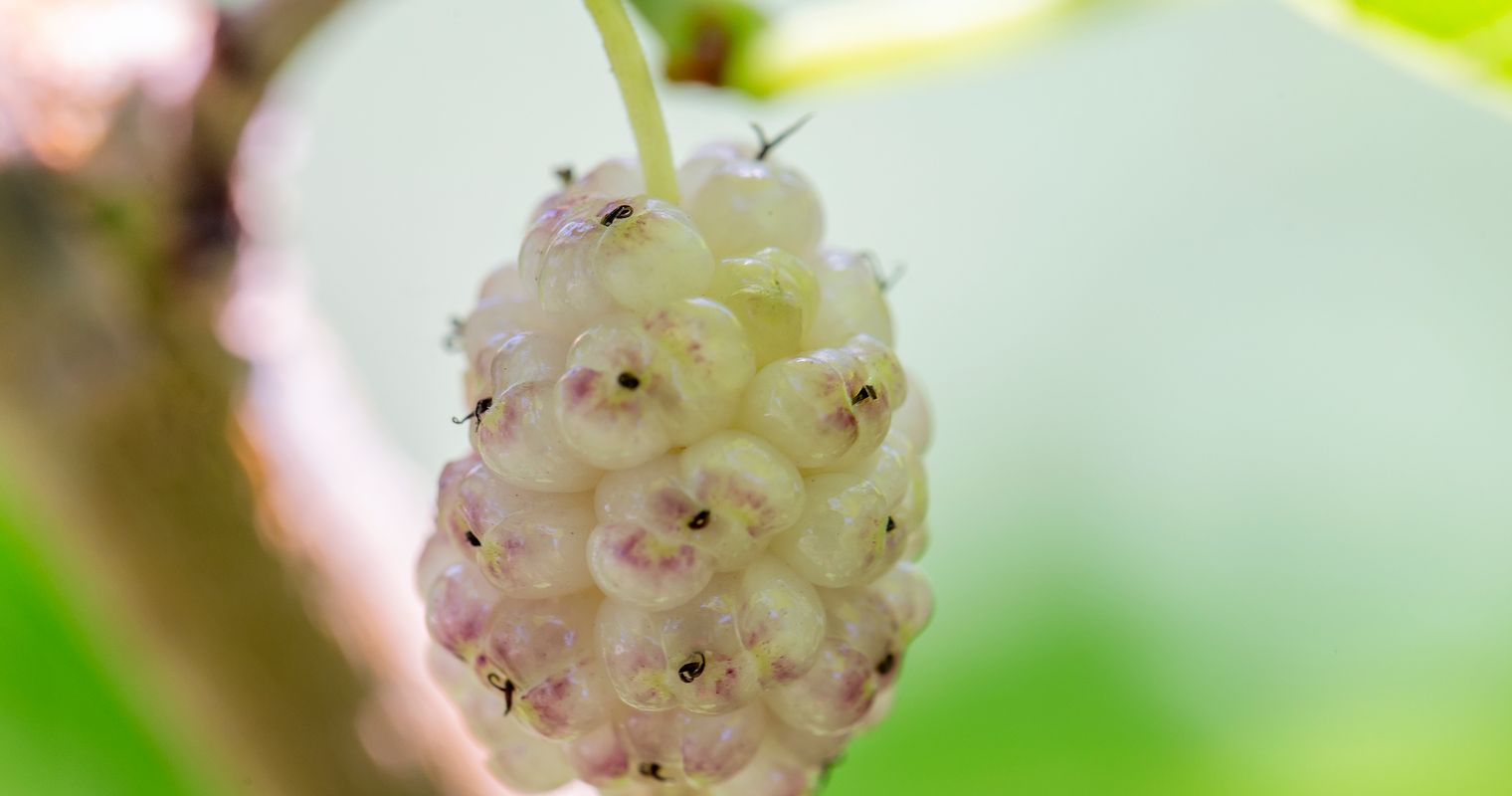
White mulberry leaves are rich in antioxidants – boasting an impressive 79% higher antioxidant value than already antioxidant-dense foods such as blueberries, blackberries, and cranberries – thus supposedly imbuing the silk produced by these silkworms with natural antioxidant properties as well.
Uses of silk
In ancient China, the Empress Leizu first developed the silk fabric for the Emperors of China. It was reserved for their own use or as gifts to other royalties. Silk represents the higher status of individuals in ancient times.
As silk becomes more affordable nowadays, it can be seen in skincare, biomedicine, the textiles industry, and so many more. Uses of silk include turning them into silk pillowcases, filling for comforters, bed linens, handbags, purses, dressing gowns and more. Individuals with sensitive skin, curly hair or breathing issues may prefer to use such silk products because of the following:
- Silk repels dust mites, mold, and mildew
- It helps with skin issues such as eczema, allergic rash, psoriasis, and atopic dermatitis, to name a few.
- It has antibacterial and anti-fungal properties.
- Silk does not tangle up curly hair like cotton pillowcases can, and may reduce frizziness.
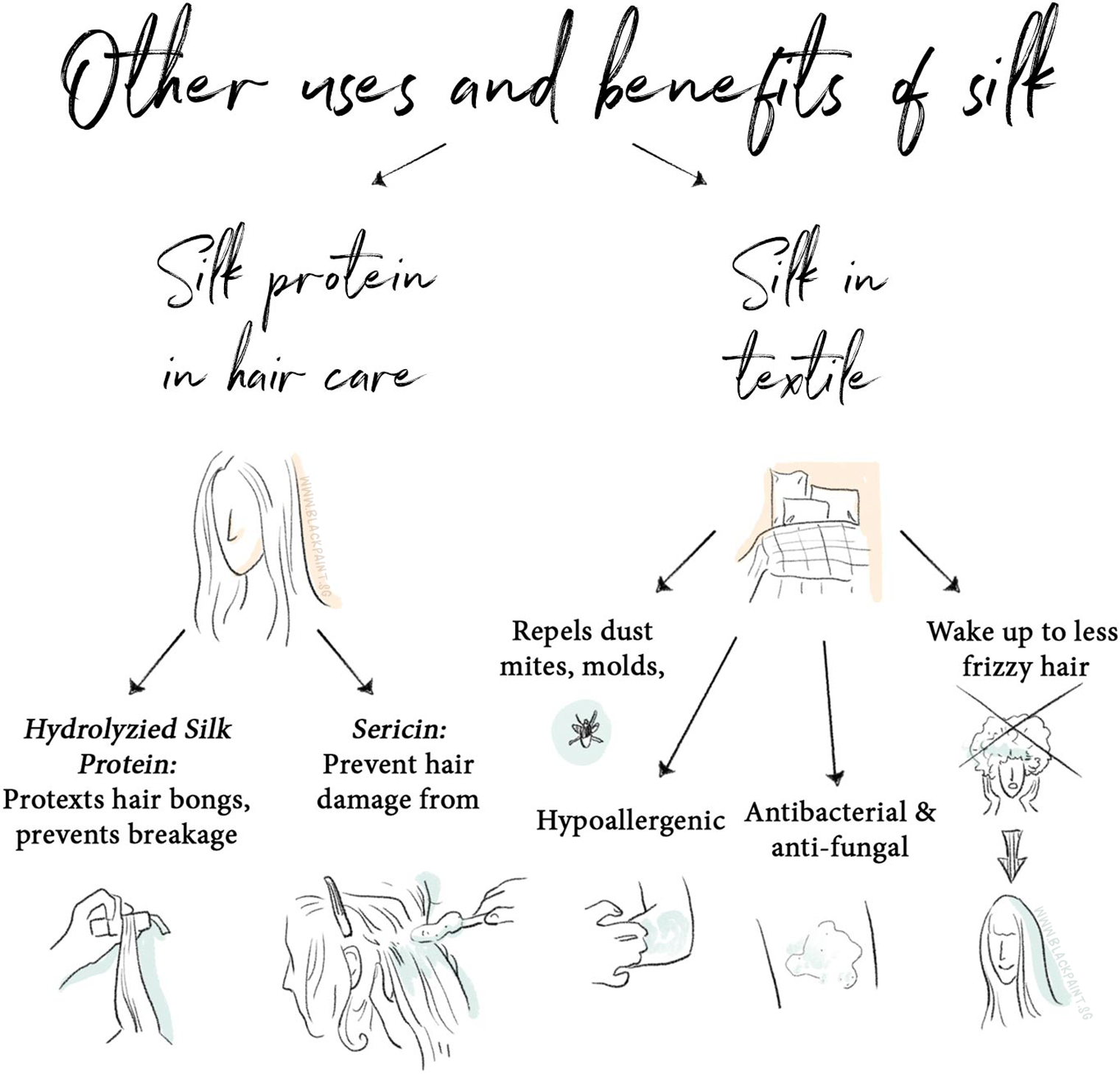
The 2 valuable silk proteins
Sericin
As the outer coating, Sericin is a protein that enables strands of silk to be bound together into a cocoon. It has important applications in medicine, where it is useful in helping to coagulate and heal wounds, and to reduce the risk of infection. It appears that wounds recover faster with the application of sericin products – one study (though conducted on rats) showed that the topical use of a cream containing sericin resulted in a much greater rate of wound reduction, and reduced inflammation of said wounds.
Sericin is also common in hair products like hair shampoo, hair conditioner and so on; in such products, silk proteins help to reduce hair damage, such as in coloured or bleached hair.
Fibroin
As the inner shaft, Fibroin is the structural center of silk, contributing to its rigid structure and tensile strength. It is therefore seen as a valuable material in the fields of biomedicine, textiles, in skincare and hair care formulations, as well as in other industries.
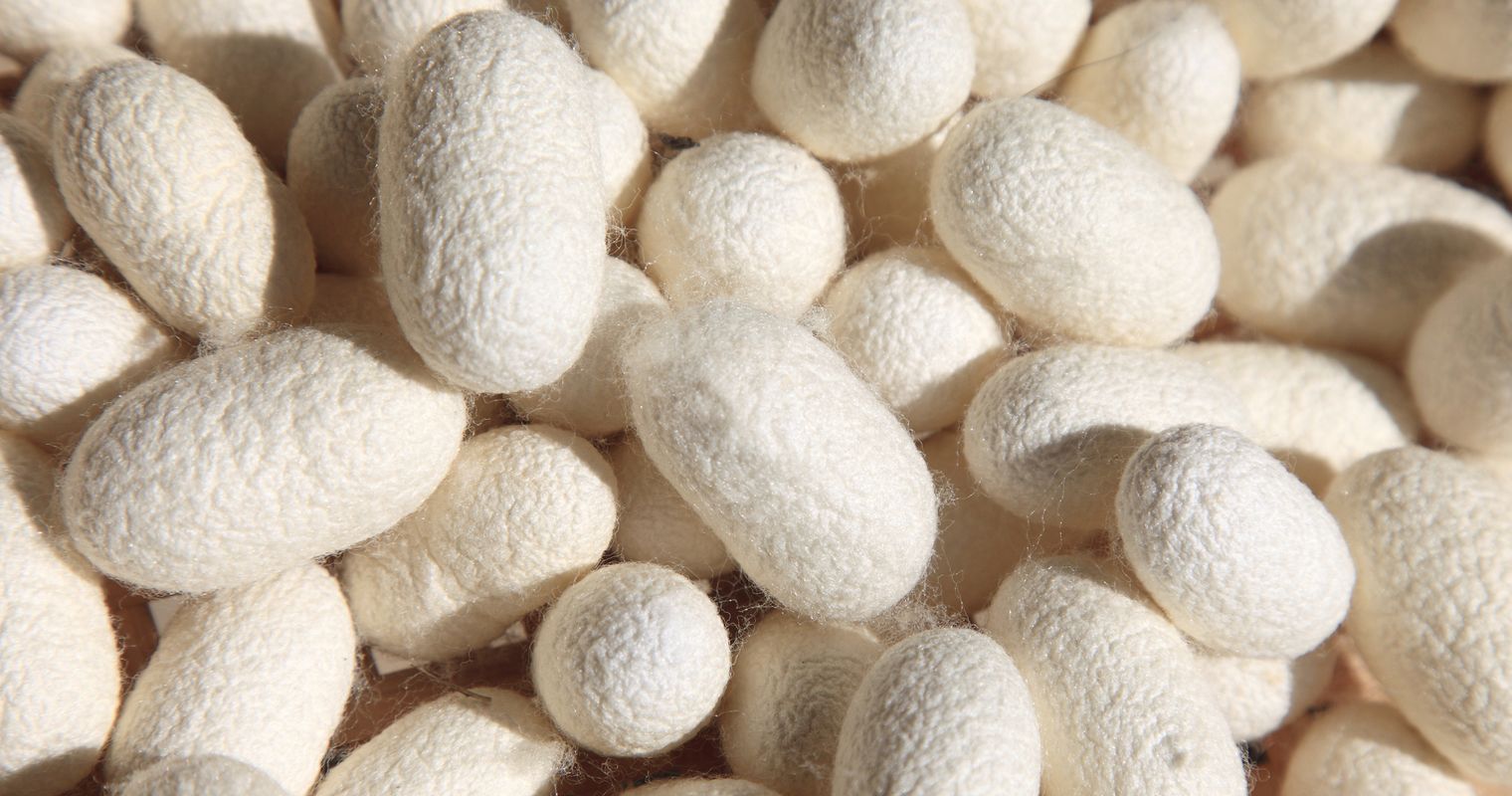
Most products use fibroin in skin care because this protein has a high percentage of glycine and alanine. The combination of glycine and alanine gives silk a remarkable effect on the skin. To break down the benefits of these further:
- Glycine is the simplest form of amino acid that the body is able to manufacture through the diet. This amino acid produces a protein that has a high concentration of collagen. Most of us have heard a lot about collagen and the wonders it can work on the skin. Glycine can help to repair skin damage and to speed up the wound healing process.
- Alanine is another amino acid which your body is also able to manufacture and derive through dietary nutrients. Common in formulations, it is a great skin conditioning agent as well. Most masks contain alanine as a leave-on ingredient, as it can penetrate the epidermal cells. This helps to fill up lines and creases present, giving skin a smoother appearance.
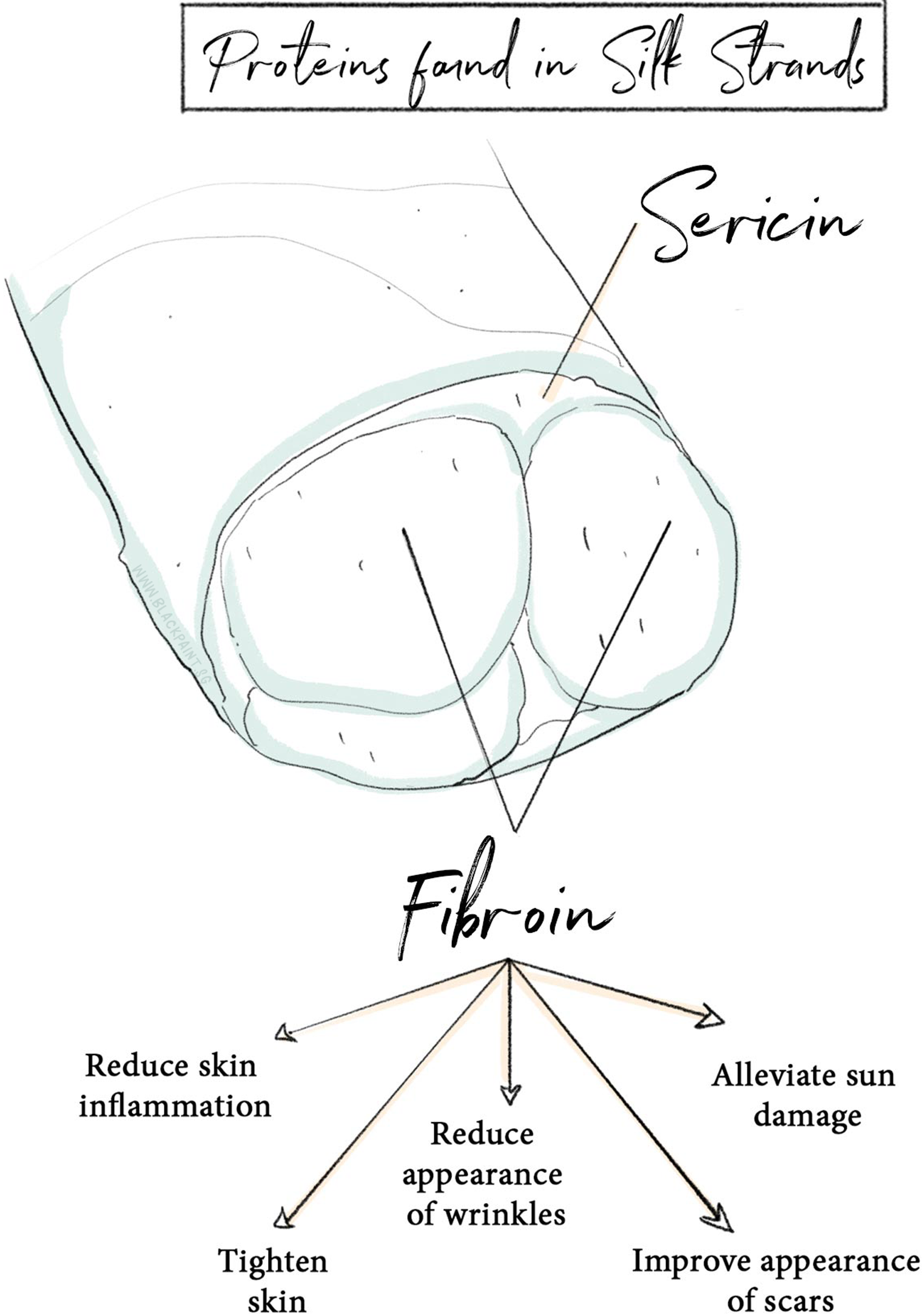
Benefits of fibroin
Fibroin is reputed to be an excellent water-binding and absorbing protein which is non-toxic and biocompatible. Therefore, skin care products with this silk protein can offer the following benefits:
- Alleviates skin inflammation
Fibroin helps to calm inflamed skin by increasing cell metabolism and promoting blood circulation. In turn, the reduction of inflammation can help to promote an even skin tone and keep acne & wrinkles at bay. - Tighten skin
It is useful for those seeking to change the appearance of aging skin, improving its elasticity and rejuvenating its appearance. - Reduce the appearance of wrinkles
Fibroin can help in ‘plumping up’ the skin, reducing the appearance of wrinkles. Some have touted it as an alternative to Botox in this regard. - Treat scars
Fibroin increases blood circulation to scar tissue. It is also useful for damaged skin, thus reduces the appearance of scars. - Alleviate sun damage
Though you may love to spend many a day basking in the rays of the sun, doing so without any sun protection can contribute to serious sun damage. It may also cause oxidative stress to your skin over time. Sun damaged skin retains hydration comparatively poorly, often has a hyperpigmented appearance and reduced elasticity. This means that skin looks more mature than it really is. However, antioxidant-containing products, such as silk protein, can help to reverse the oxidative damage caused by free radicals and help to repair/mitigate sun damage.
Silk and the beauty industry
The silk extracts are so highly favoured in the beauty industry because of these two proteins – sericin and fibroin (which are built from 18 amino acids).
These are easily absorbed into the skin and boast the following benefits:
- Promotes cell repair
- Promotes cell regeneration
- Reduces transdermal water loss and hence helps to maintain the skin’s hydration levels.
- May boost collagen levels, which leads to firmer skin
The silk cocoons themselves are also popular, particularly in Asian skincare circles, for their beneficial properties. On skincare forums and articles across the internet, many swear by the use of silk cocoons as an exfoliant for washing the face, as it is claimed that it:
- Has anti-aging properties (by smoothing out wrinkles and scars on your skin)
- Is gentle and less abrasive than other types of exfoliants, and
- Can protect against sun damage, particularly that from UVB rays.
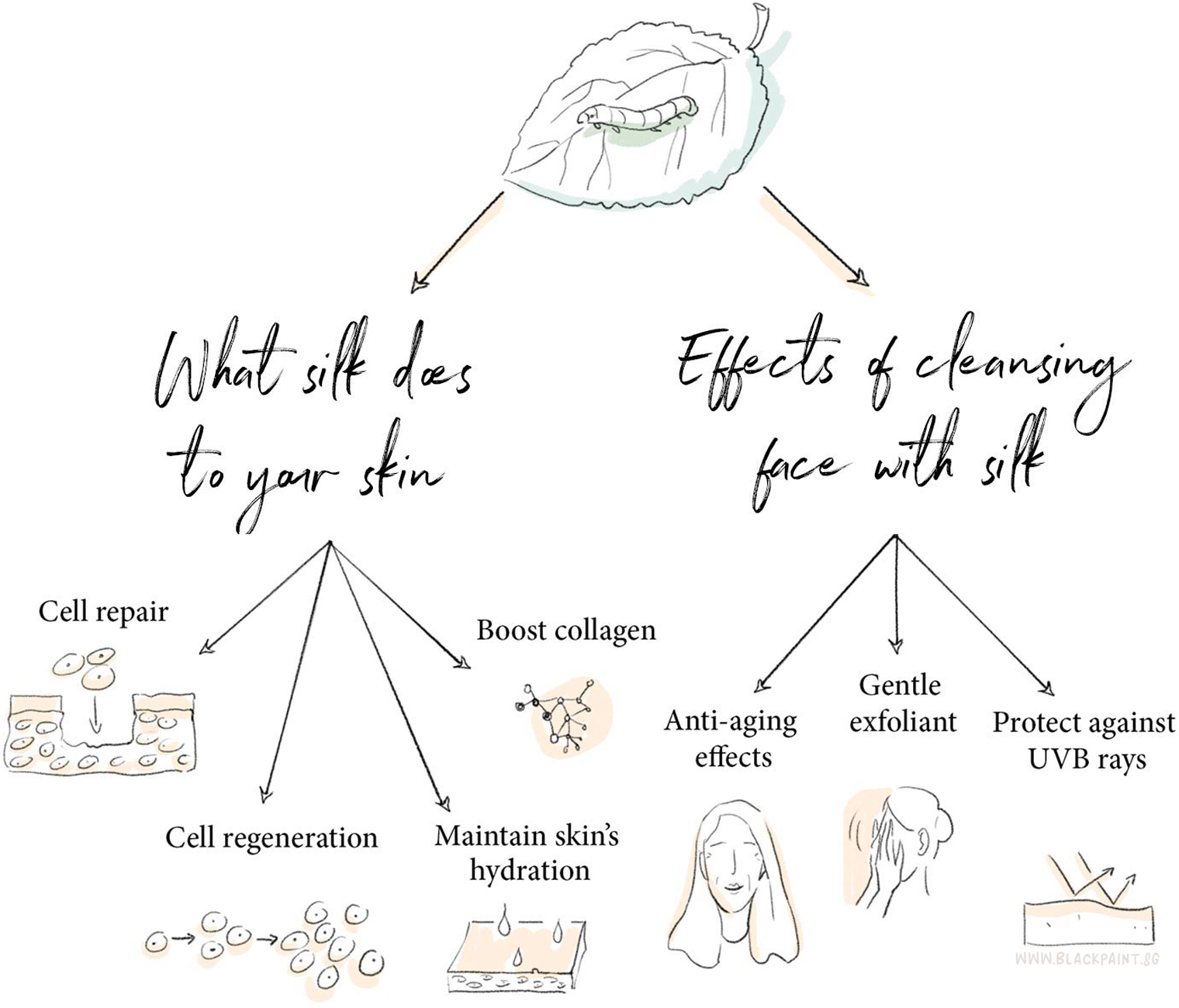
Silk ingredient names and jargons used in skincare ingredients
In the present market, ingredients derived from silk go by many different names. How are we going to choose the right one for ourselves, in order to meet the needs of our skin?
Silk powder, silk peptides, silk protein, and silk amino acids are all names which you may have come across. These contain the 18 different amino acids, originating from the cocoon of the silkworm. These have a chemical composition rather similar to the makeup of human skin and hair. It’s why it’s a compatible product for the maintenance of our skin and hair.
How are they different?
The difference lies in their particle sizes, which affects water solubility. It also affects their penetration power into the various layers of our skin and into the cuticles of our hair.
Silk proteins that can penetrate the skin more deeply are of more value for their therapeutic qualities. However, you may lose some of the desired skin feel upon applying the product. You may also notice a lack of superficial cosmetic effects (for example, the temporary filling in of fine lines and wrinkles) that other products may initially provide.
Silk peptide powder, a.k.a. hydrolyzed silk protein is the highly recommended ingredient because it is highly effective in penetrating the skin’s many layers. To produce such powder, raw silk needs to undergo alkaline hydrolysis and de-alkylation. This leads to a more refined product which has a smaller particle size (which hence penetrates more easily into our hair and skin).
Hydrolyzed silk lends shine, elasticity and a smooth feeling to our skin and hair. Even when dry, it forms a protective crystalline surface that is not sticky to the touch, meaning that it’s both effective and cosmetically elegant. When used in leave-on skincare products, hydrolyzed silk protein can help the skin’s water barrier to retain moisture. At the same time, it also provides an attractive sheen. It’s no wonder so many brands produce cosmetics, body and skin care products with hydrolyzed silk in their formulations.
Silk as a hair care wonder ingredient
As spoken earlier hydrolyzed silk protein can be highly beneficial to hair too, and works by coating the cuticles of the hair strands. This seals in the moisture and protects the bonds in our hair so that it looks smoother and straighter. The other bonus point is that it adds shine, giving hair a more lustrous and healthy appearance.
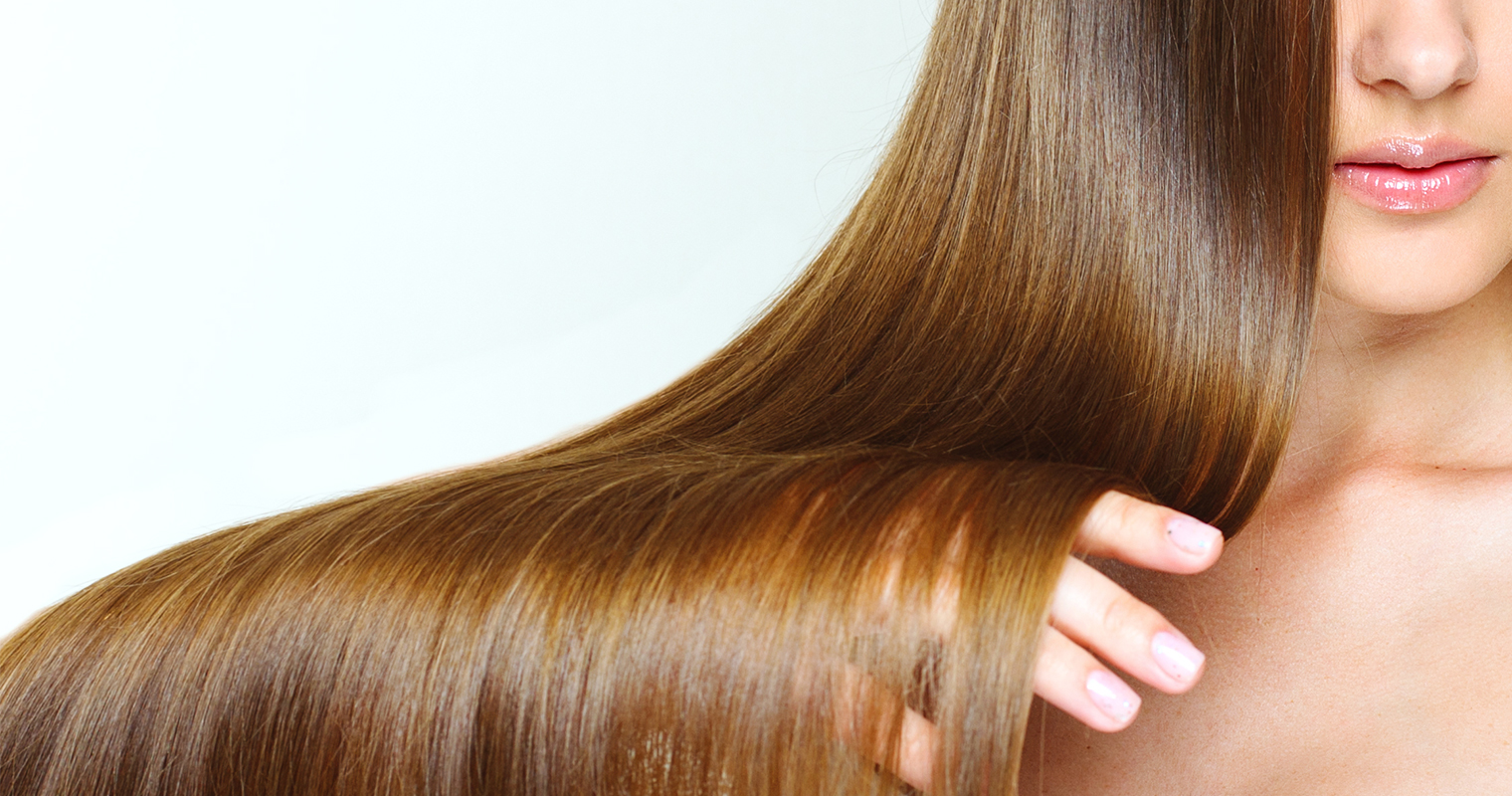
Some manufacturers add a combination of keratin and sericin together into hair product formulations. It enables the product to penetrate the individual hair strands more easily and to strengthen damaged hair caused by harsh chemicals, heat or colouring treatments, and others.
Apart from the above, the sericin barrier can prevent direct contact between hair and certain harsh chemicals. As such, this prevents hair damage such as those attributed to harsh chemicals or environmental toxins and pollutants.
Studies of sericin used in haircare
A Japanese study showed enlarged cuticle fragments of damaged hair with an opened cuticle and a significant loss of protein. In this study, participants using sericin-fortified hair masks were found to have ‘silkier’ hair as a result. Sericin was also found to have potential in hair growth product applications. In this particular study, one group applied a product containing sericin on the tops of their heads twice a day. Upon further inspection, hair thickness, ie. the number of strands of hair, also showed an increase. This occurred in as short a time as 6 to 17 days later. Though this test alone does not conclusively support the idea that sericin can reverse hair fall or hair loss, the results are definitely promising.
What is the difference of BLACK PAINT’s new range of Premium products compared to the regular range?
 The benefits of silk in skincare is exceptional and BLACK PAINT regular range had all along incorporate it as one of the key ingredients in our signature soaps. We have been receiving numerous positive feedback from our customers about the wonderful results silk bring to their skin. Moving forward, we are responding to our customers’ demand by increasing the quantity of hydrolyzed silk protein not just by a small percentage, but by tripling its concentration in our products. Customers now get to enjoy heightened power of skin repair and hydration, UV protection and anti-aging when they use BLACK PAINT’s Human Lactobacillus range.
The benefits of silk in skincare is exceptional and BLACK PAINT regular range had all along incorporate it as one of the key ingredients in our signature soaps. We have been receiving numerous positive feedback from our customers about the wonderful results silk bring to their skin. Moving forward, we are responding to our customers’ demand by increasing the quantity of hydrolyzed silk protein not just by a small percentage, but by tripling its concentration in our products. Customers now get to enjoy heightened power of skin repair and hydration, UV protection and anti-aging when they use BLACK PAINT’s Human Lactobacillus range.







